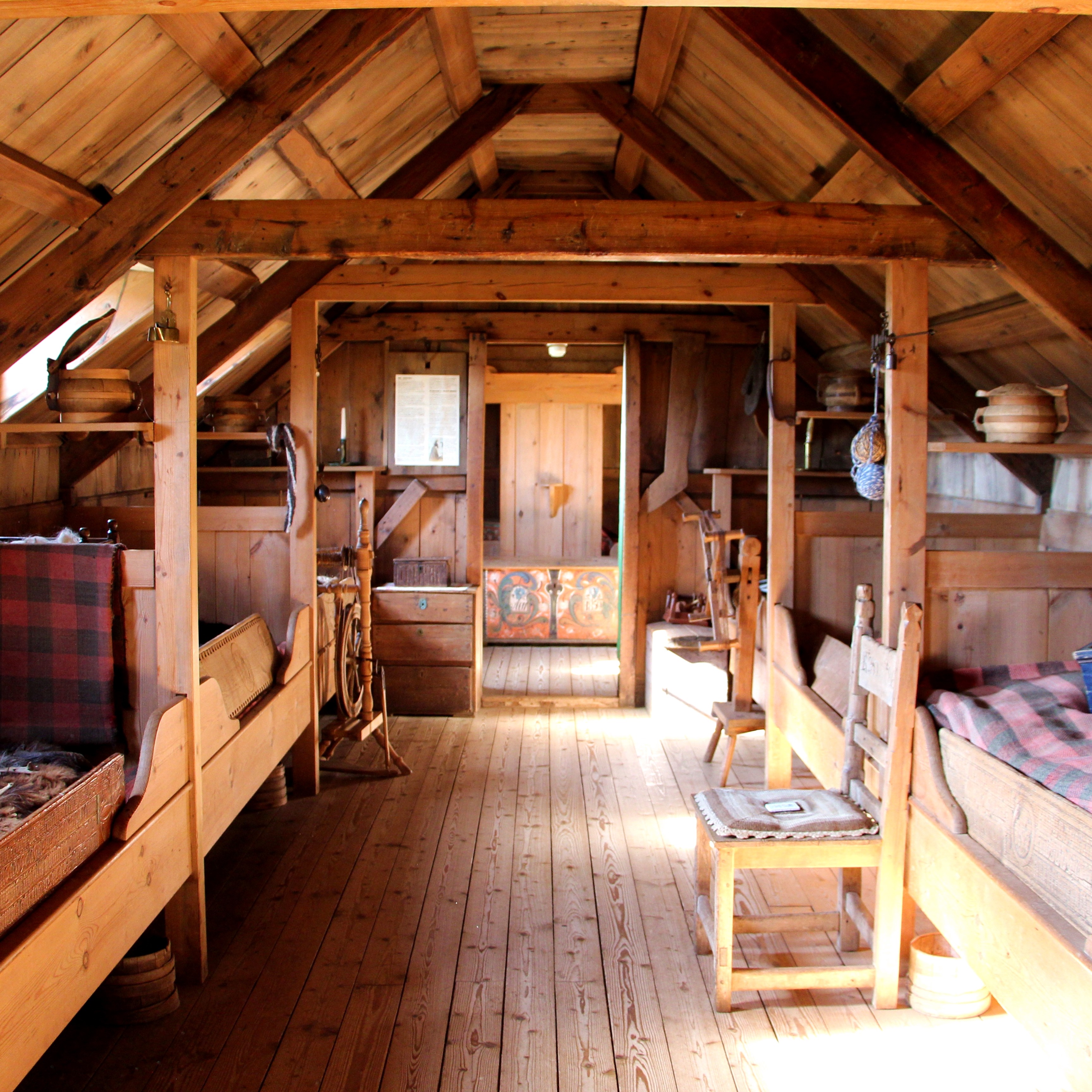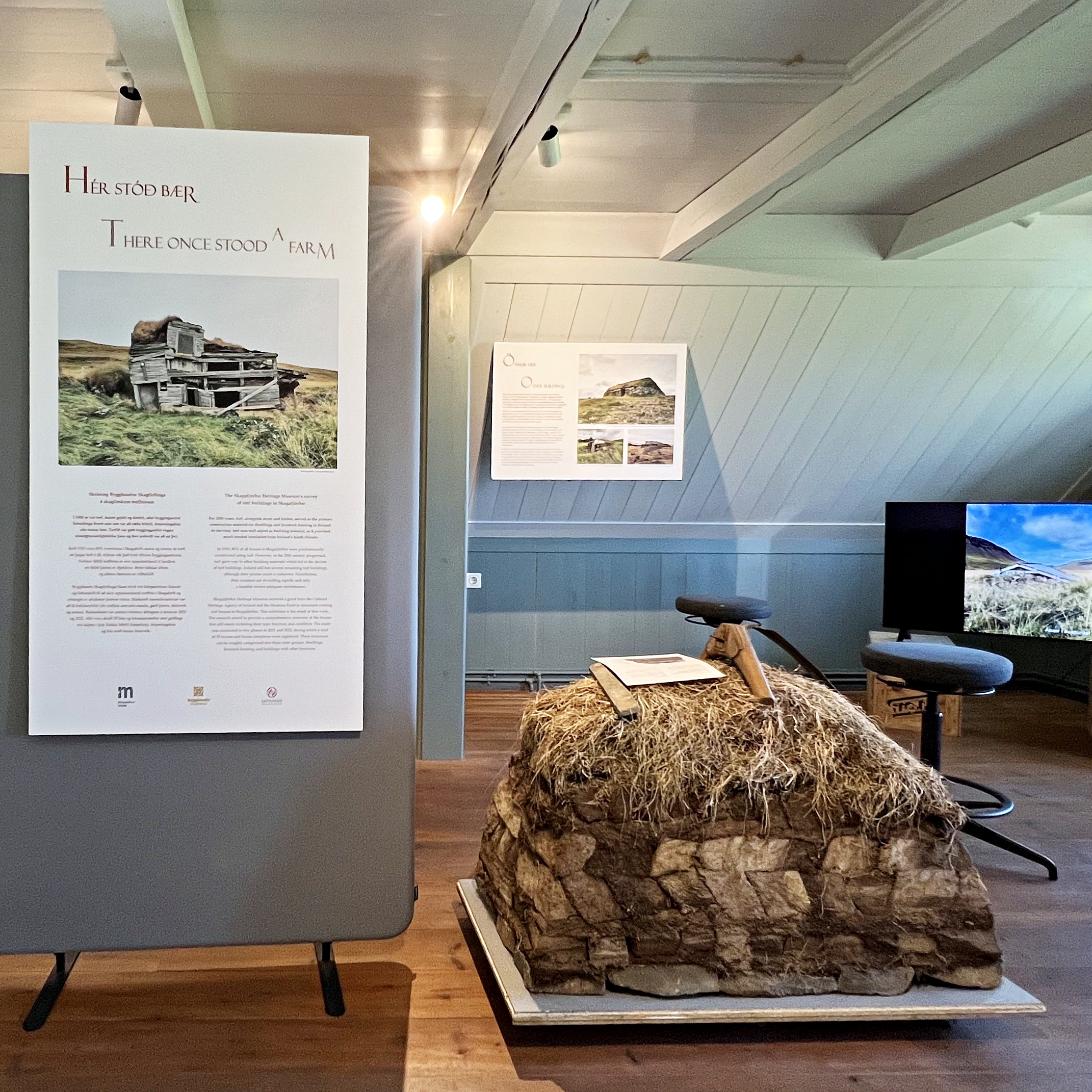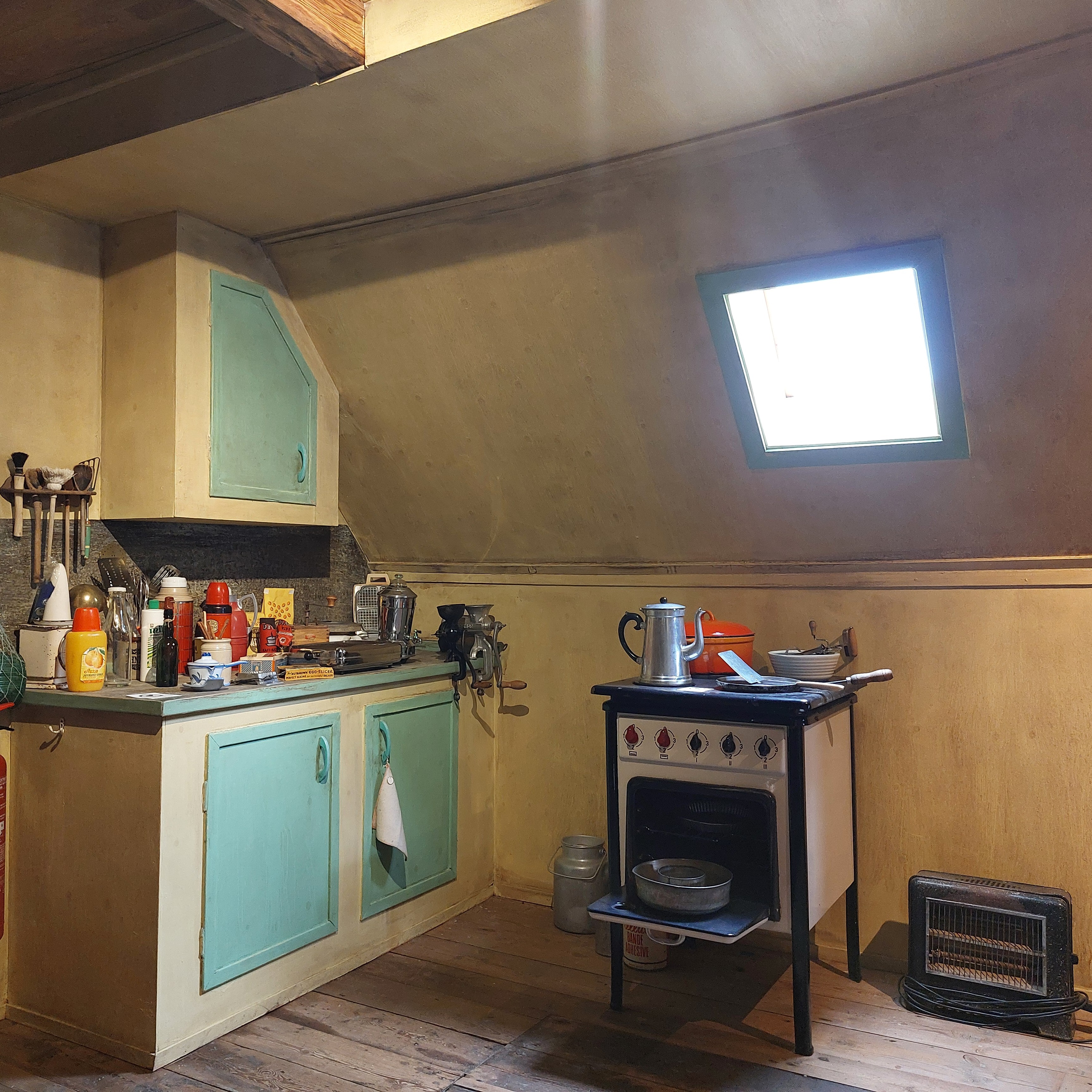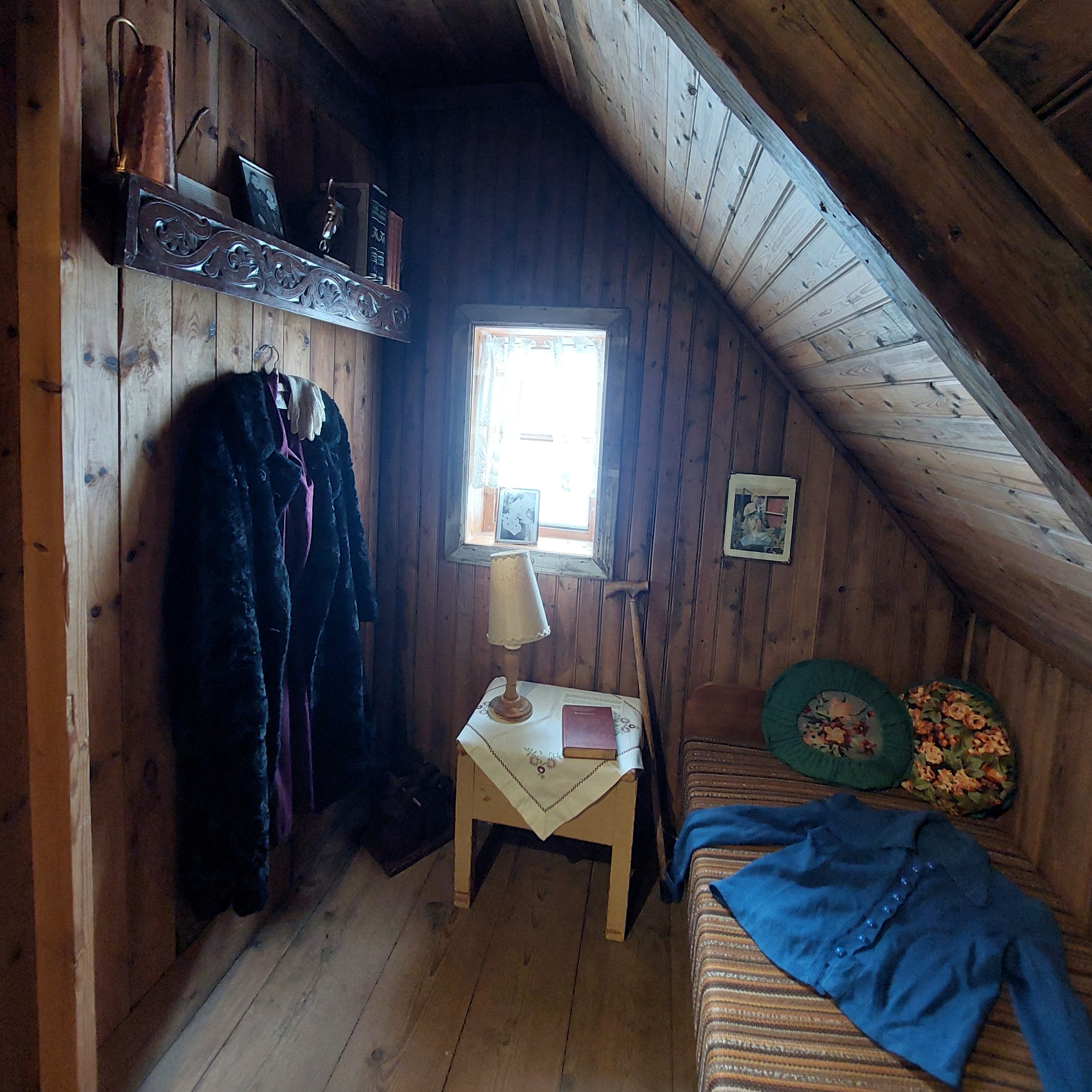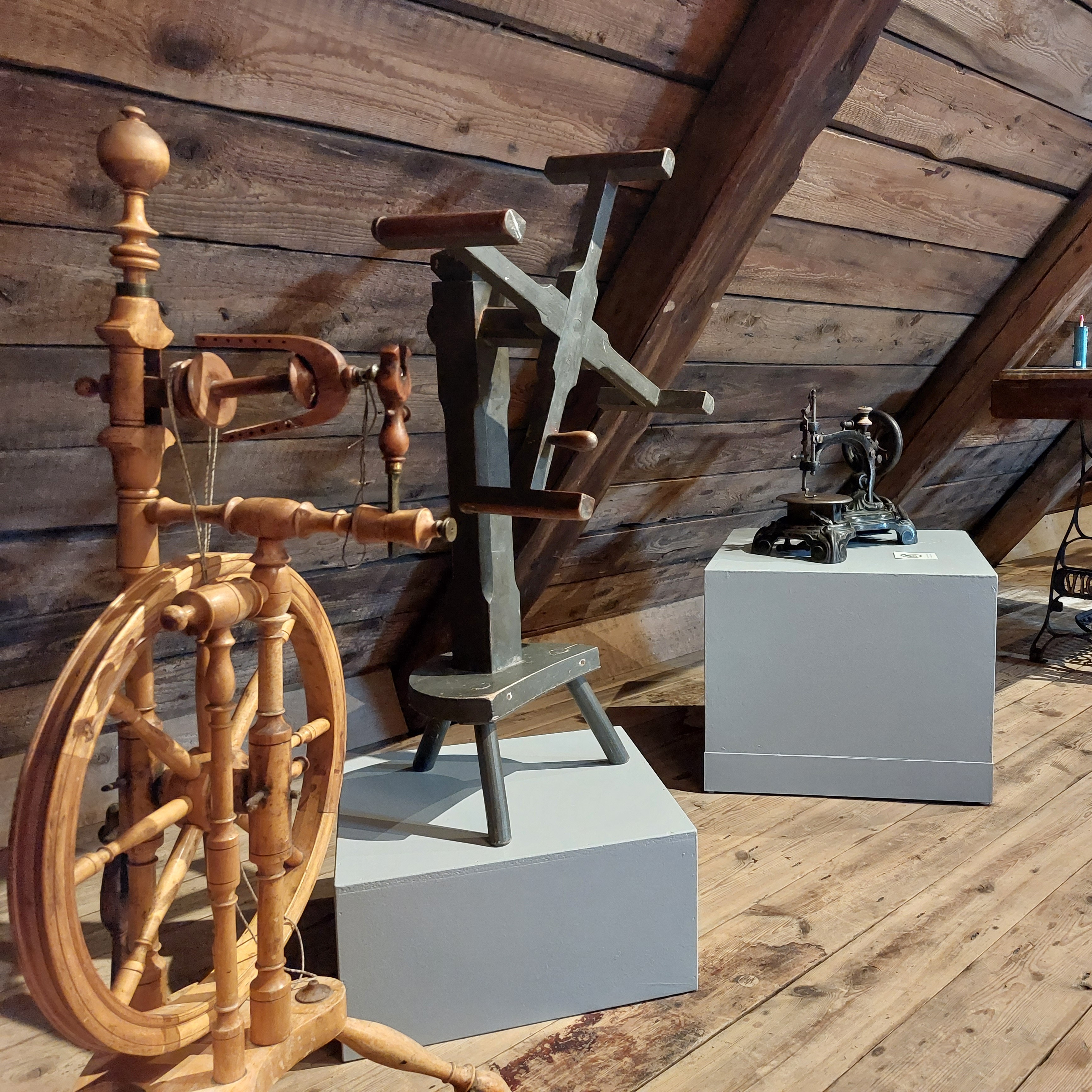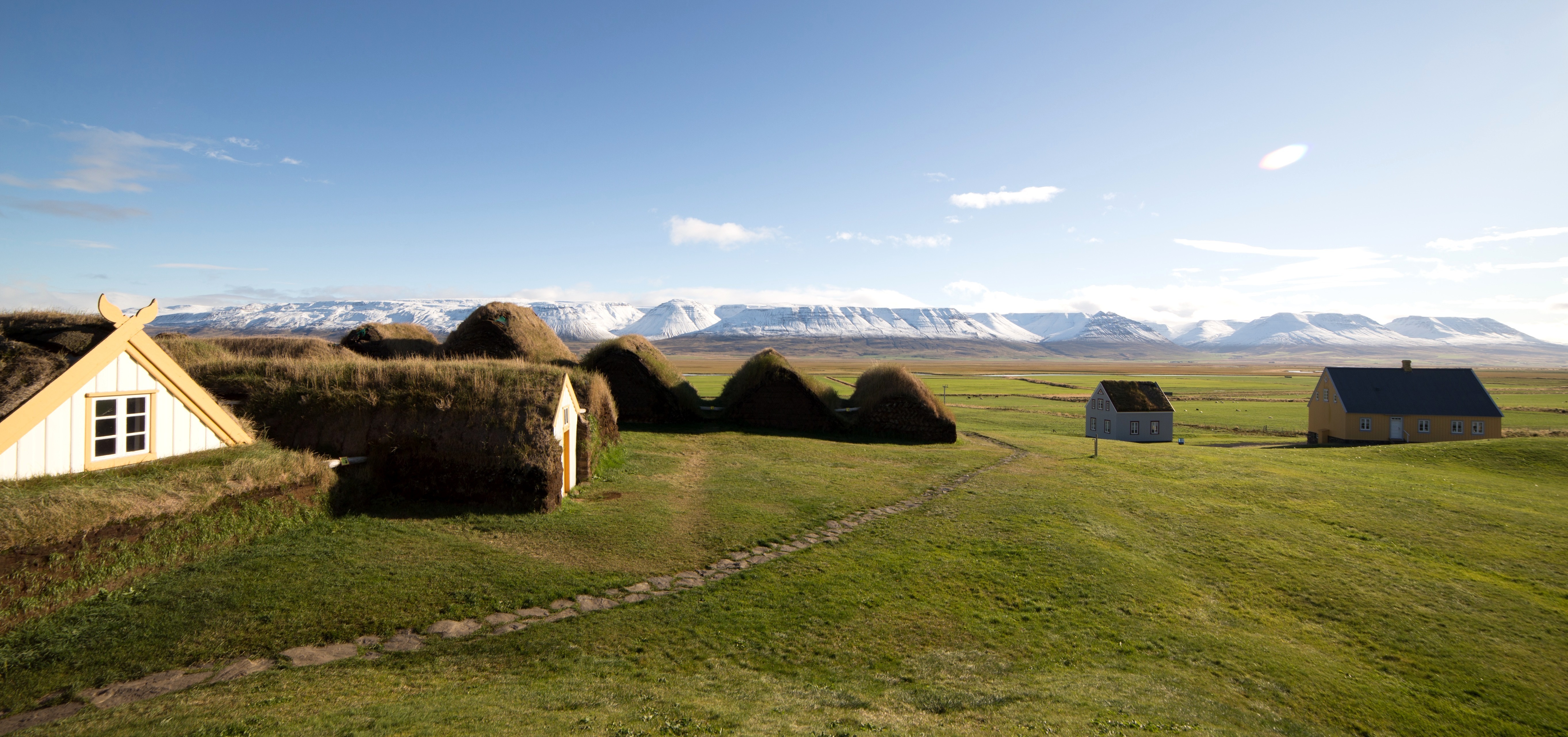
The museum’s exhibitions are located in three buildings at the Glaumbær museum site in Langholt.
- In the old turf house at Glaumbær (left in the photo), you’ll find the museum’s main exhibition, Life in Turf Houses in the 19th Century.
- In Gilsstofa (center in the photo), exhibitions are spread across two floors.
- In Áshús (right in the photo), you’ll find the museum café and several smaller exhibitions.
Exhibition Overview
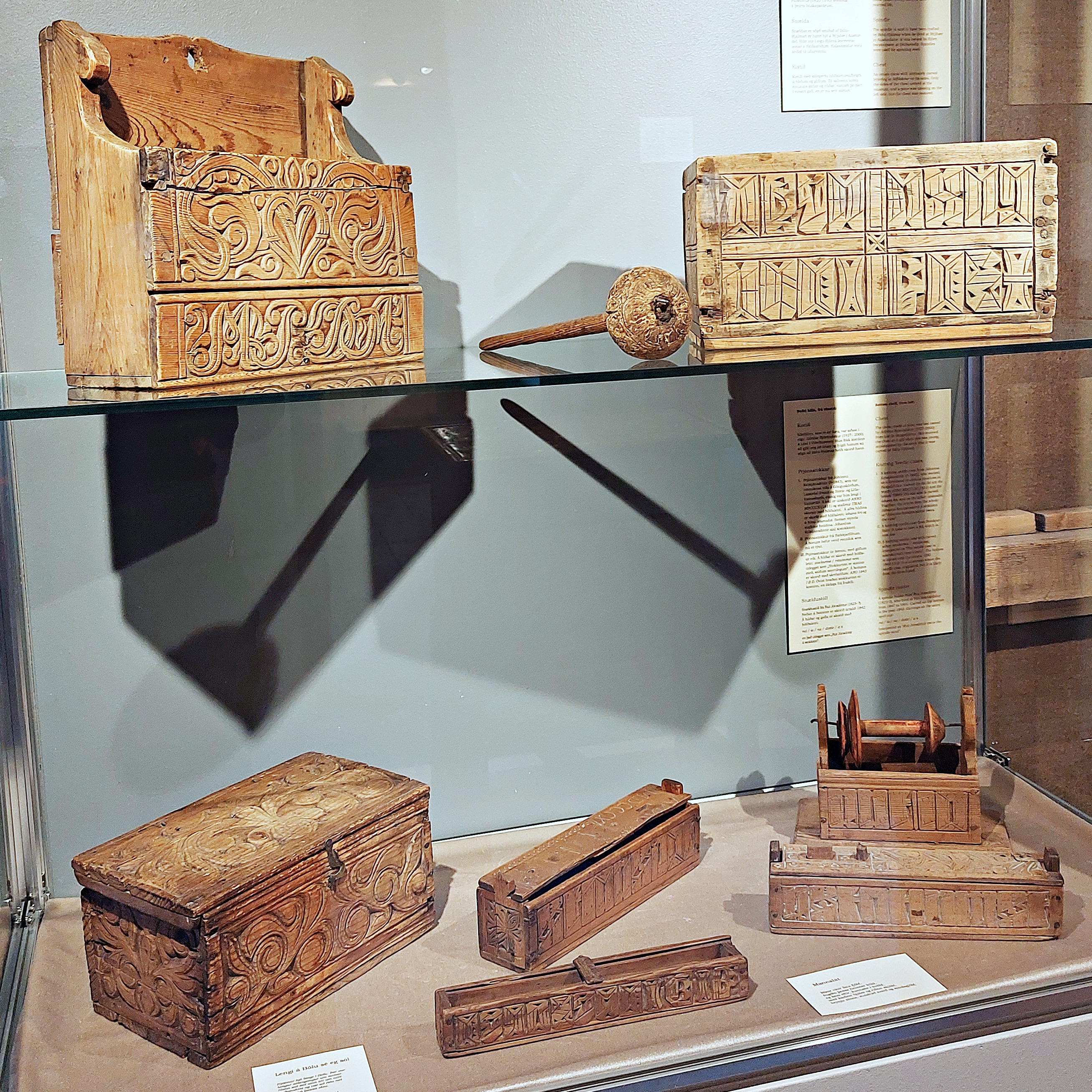 Bólu-Hjálmar Áshús |
|
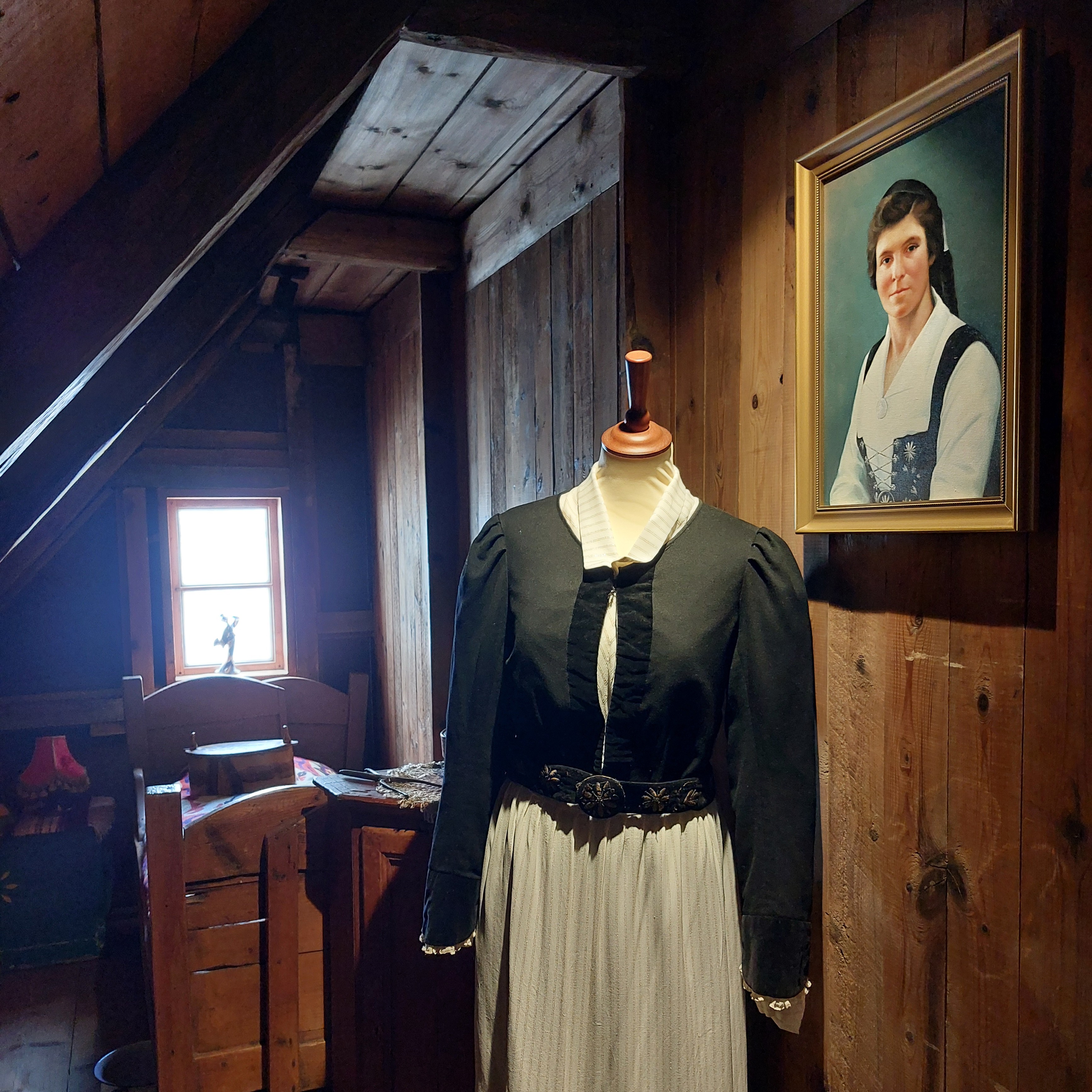 Monika from Merkigil Áshús |
|
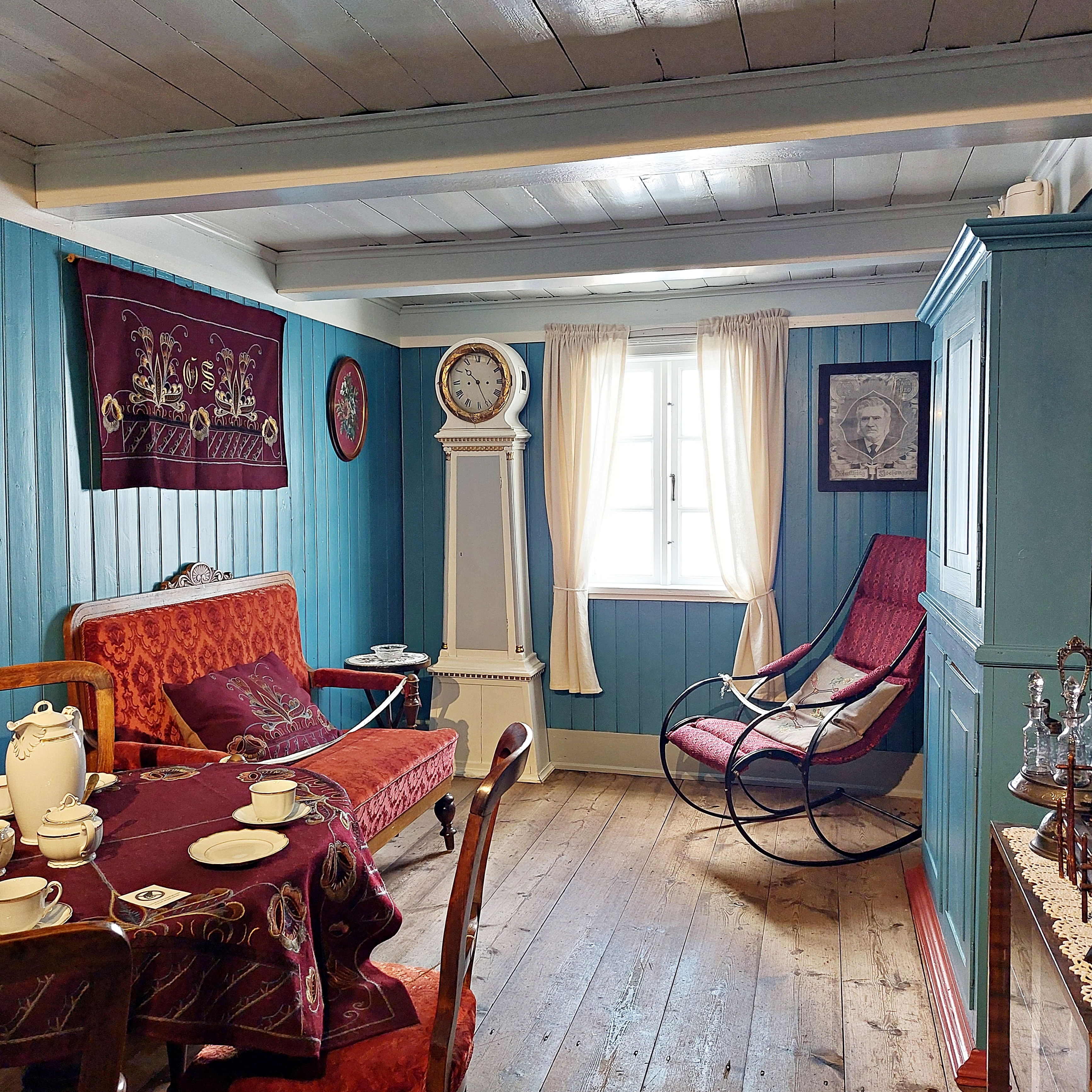 The Parlor Áshús |

